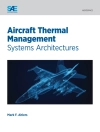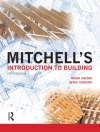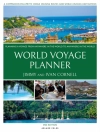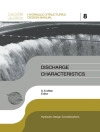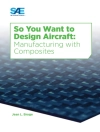This book highlights the concept of informed architecture as an alternative to performance-based approaches. Starting with an analysis of the state of art, the book defines an operative methodology in which performative parameters lead to the generation of the shape becoming the design’s input, rather than being mere quantitative parameters. It then uses case studies to investigate the methodology. Lastly, the book discusses a novel way of conceiving and using the manufacturing tool, which is the basis for the definition of informed architectures in relation to data usage and the optimization process.
Jadual kandungan
Computational design and innovative production methods.- Post-industrial robotics: analysis of case studies to explore informed architecture.- Performative architecture and clay materials. Overview of the main research paths in the European context.- Harvard Gsd, Ceramic Shading System.- Harvard Ggsd, Flowing Matter.- Harvard Gsd, Revolving Brick.- Harvard Gsd, Woven clay.- CODESIGNLAB , Ceramica Performativa.- TU Delft, Informed materiality.- Performative architecture and wood materials. Overview of the main research paths in the European context.- ICD, Research Pavilion 2011.- ETH, The sequantial roof.- ETH, Topology optimization.- AA , Wood Chip Burn.- ICD, Robotic Softness.- ICD, Graded Light in Aggregate Structures.- Performative architecture and plastic materials. Overview of the main research paths in the European context.- ETH, Acoustic bricks.- ETH, Mesh mould.- TU Delft, Additive manufacturing for acoustic.- TU Delft, Additive Manufacturing for daylight.- MIT, Robotics Enabled Stress Line.- Solar bytes Pavilion.- Graz University of Technology, D-FORM.- AA, Automated Robotic Fabrication.- Fab Union, Light Vault.- Trivoc.- TU Delft, Informed porosity.- Performative architecture and metal materials. Overview of the main research paths in the European context.- Virginia Tech, Automating eclips.- Performative architecture and fiber materials. Overview of the main research paths in the European context.- ICD, Research Pavilion 2013-2014.- ICD, Research Pavilion 2014-2015.- ICD, Research Pavilion 2016-2017.- Feedback on the design processes for the realization of informed architectures.
Mengenai Pengarang
Angelo Figliola completed his Ph D at the Department of Planning, Design and Technology, PDTA, of the University “La Sapienza”, Rome; during the Ph D he was a visiting researcher at IAAC, University for Advanced Architecture of Catalunya, working on Robotic fabrication applied to wood structures. In 2013, he was awarded a post-graduate II level Masters in Housing from the University of Roma. His research interests lie in the field of architectural technology in the post-digital age: the relationship between computational design, materials and innovative fabrication techniques as a new design paradigm for the investigation of performative architecture.
Alessandra Battisti Registered architect, Professor in Environmental Design and Technology of Architecture at the Faculty of Architecture of “La Sapienza” University of Rome, where she is: Head of the Master’s Degree in “Landscape Architecture” (‘16-in progress) and in Master Degree in “Architecture-Urban Regeneration” (‘20), Director of the 2nd level University Master’s degree course in “Valorisation and enhancement of small Historical centres” (‘13-in progress). Since 1992 she has been carrying out research, teaching and experimentation activities on topics such as technological innovation for environmentally aware architecture, buildings’ ecological and energetic efficiency. Winner of more than 30 international competitions of Architecture.





